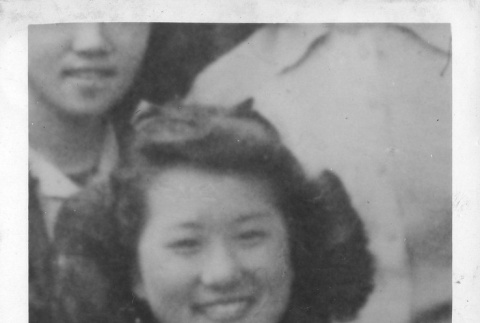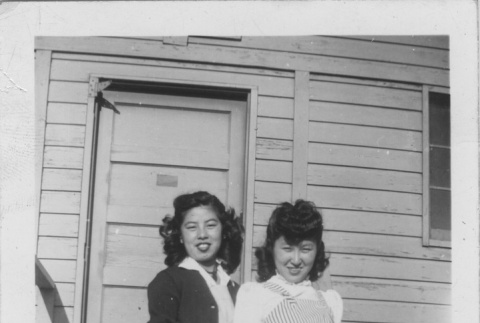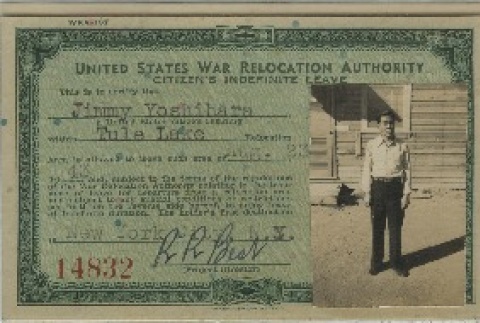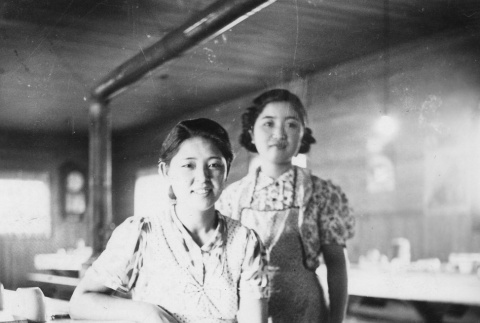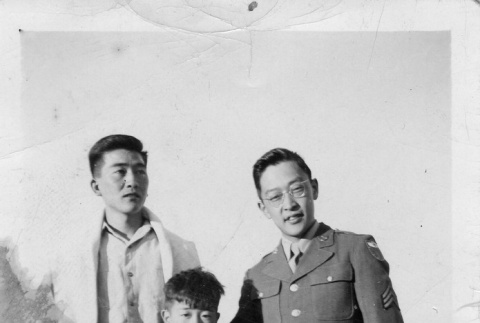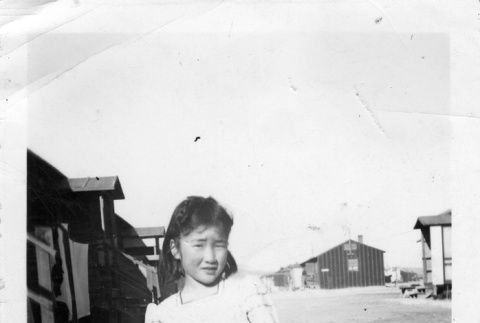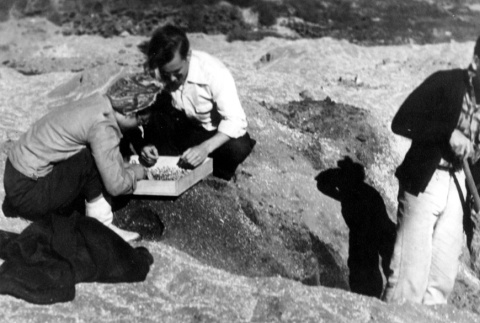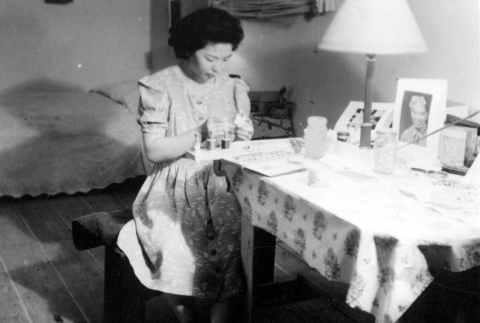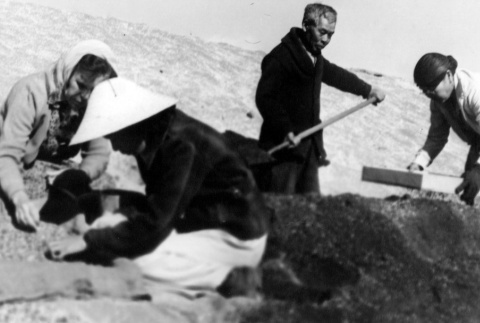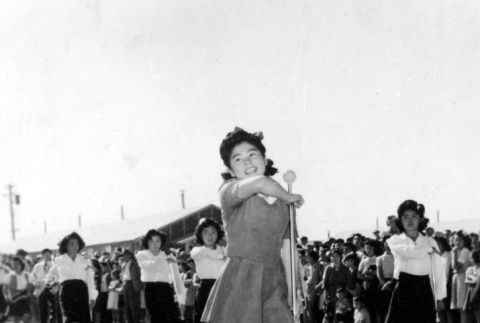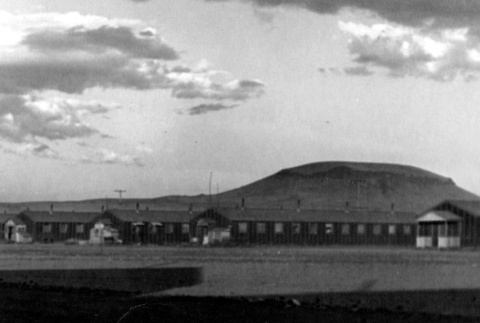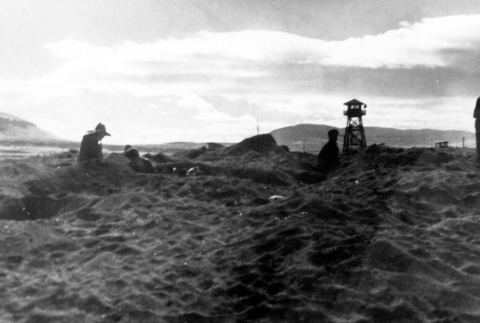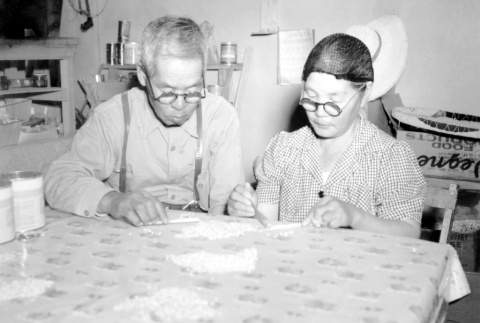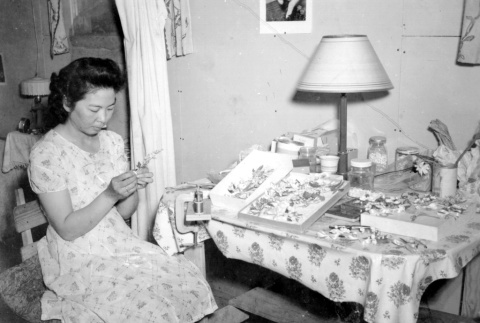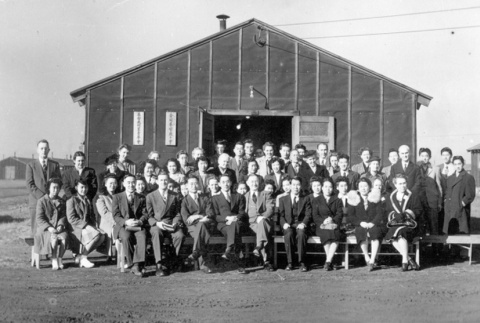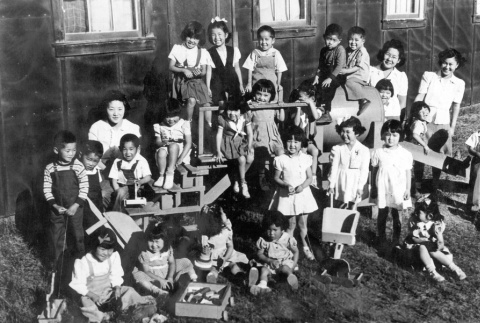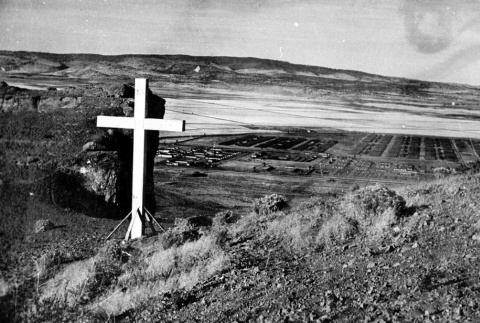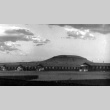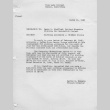1208 items
1208 items
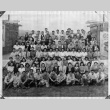
img
Recreation department staff (ddr-densho-111-3)
Staff of Tule Lake concentration camp's recreation department. They are sitting on a stage platform which was built in a firebreak, and used for various performances. Second row from front, ninth from left is Harry Mayeda, the Recreation Department Director. Elaine Ishikawa Hayes is in the third row, sixth from left.
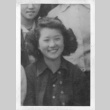
img
Nisei girl in class photo (ddr-densho-111-7)
Elaine Ishikawa Hayes' sister Jean in a class photo.


doc
Citizen's indefinite leave card (ddr-densho-126-4)
A card given by the War Relocation Authority (WRA) to Nisei who were allowed to leave the camps indefinitely for work or school.
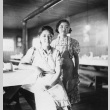
img
Two Nisei women in a mess hall (ddr-densho-154-4)
Photo donor's mother, Toshiko Nakagawa, on the right with an unidentified friend.
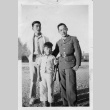
img
Two Nisei men and a boy in a concentration camp (ddr-densho-154-3)
Photo donor's uncle, Fred Nakagawa and his son. A family friend, Ken Sekiguchi, is in army uniform.

img
Nisei girl in camp (ddr-densho-154-5)
Photo donor's aunt Kiku Nakagawa. She was in a fatal automobile accident in 1953.
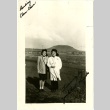
img
Two women in camp (ddr-manz-6-19)
Note on reverse: My Dearest Chan -- Here's a picture of my sister & myself. I hope you like it, wishing you all the luck in the big big world. I am 16 yrs and Yoshiko is 17 1/2 yrs. I got thin don't you think so - ha ha ha ain't I [illegible] thow ----"
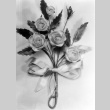
img
Jewelry made in camp (ddr-densho-2-49)
This corsage pin was made by Peggie Yorita, a Japanese American at the Tule Lake concentration camp. The flowers and leaves are composed of shells found at the camp. Tule Lake was drained in the early 1900s. The camp was located on the old lake bed, where people found shells for making jewelry to sell to …
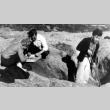
img
Japanese American and friend digging for shells (ddr-densho-2-60)
Jimmie Yorita (right) digs for shells used by people in camp to make jewelry. His sister, Patsy (left), and Neal Frost, son of one of the camp's teachers, sift the dirt. Tule Lake was drained in the early 1900s. The camp was located on the old lake bed, where camp inmates found shells for making jewelry …

img
Corsage made of shells (ddr-densho-2-4)
This corsage pin was made by a Japanese American in camp. The flower petals and leaves are made from various types of shells found at the camp. She used toothbrush bristles dipped in cornmeal for stamens and wound the stems by hand with fine green thread. Wire from screen windows was used to put the pin …
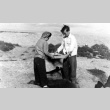
img
Japanese American and friend sifting for shells (ddr-densho-2-59)
Patsy Yorita (left) and Neal Frost, (son of a teacher at the Tule Lake concentration camp), sift dirt for shells. The shells were used by people in the camp to make jewelry. Tule Lake was drained in the early 1900s. The camp was located on the old lake bed, where people found shells for making jewelry …
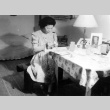
img
Japanese American making jewelry (ddr-densho-2-61)
Peggie Yorita makes jewelry from shells found at the Tule Lake concentration camp. Tule Lake was drained in the early 1900s. The camp was located on the old lake bed, where people found shells for making jewelry to sell to camp personnel. Shells were scarce, and digging became competitive. To beat the rush, some peopel got …
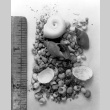
img
Shells used for jewelry making (ddr-densho-2-51)
Japanese Americans at the Tule Lake concentration camp enjoyed making jewelry from shells, such as the ones shown here, which were found within the confines of the camp. These shells have not yet been bleached. Tule Lake was drained in the early 1900s. The camp was located on the old lake bed, where people found shells …
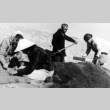
img
Japanese Americans digging for shells (ddr-densho-2-48)
Left to right: Peggie Yorita, Margaret Frost (wife of one of the camp's teachers), Kumataro Nishimura, and his wife, Kadju, dig and sift for shells at the Tule Lake concentration camp. Kumataro made the sieve by hand from scrap lumber and wire from a door screen. The shells were bleached and used for jewelry-making, which was …

img
Incarceree performing in camp parade (ddr-densho-2-23)
Patsy Yorita performing a flag salute at the Tule Lake concentration camp at the Independence Day parade.
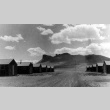
img
Tule Lake concentration camp (ddr-densho-2-33)
View of the Tule Lake concentration camp barracks. A rock formation that the inmates called "Castle Rock" can be seen in the background. After obtaining permission to go through the gates, people could climb to the top of the formation.
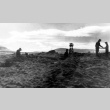
img
Japanese Americans digging for shells (ddr-densho-2-47)
These individuals are digging for shells to make jewelry, which was a popular pastime for many Japanese Americans in camp. Left to right: Kumataro Nishimura, Kadju Nishimura, Jimmie Yorita, Neal Frost (son of one of the teachers at Tule Lake), and Patsy Yorita. Tule Lake was drained in the early 1900s. The camp was located on …
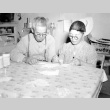
img
Japanese Americans preparing shells for jewelry making (ddr-densho-2-50)
Kumataro (left) and Kadju Nishimura measure and separate shells to be used in jewelry-making. The Nishimuras woke up at the crack of dawn and dug waist-deep holes to find the shells. The shells were then bleached white and later painted. Tule Lake was drained in the early 1900s. The camp was located on the old lake …

img
Japanese American making shell jewelry (ddr-densho-2-58)
Peggie Yorita making jewelry from shells found within the confines of the Tule Lake concentration camp. Making jewelry was a popular pastime for the Japanese Americans. Tule Lake was drained in the early 1900s. The camp was located on the old lake bed. As a result, shells were available for people to fashion into jewelry for …



